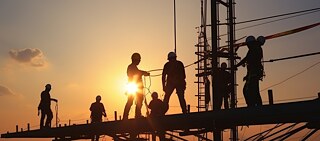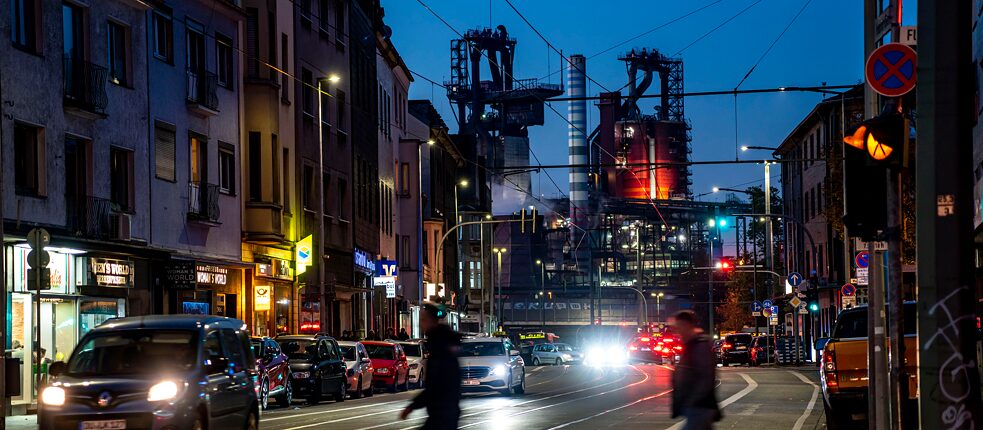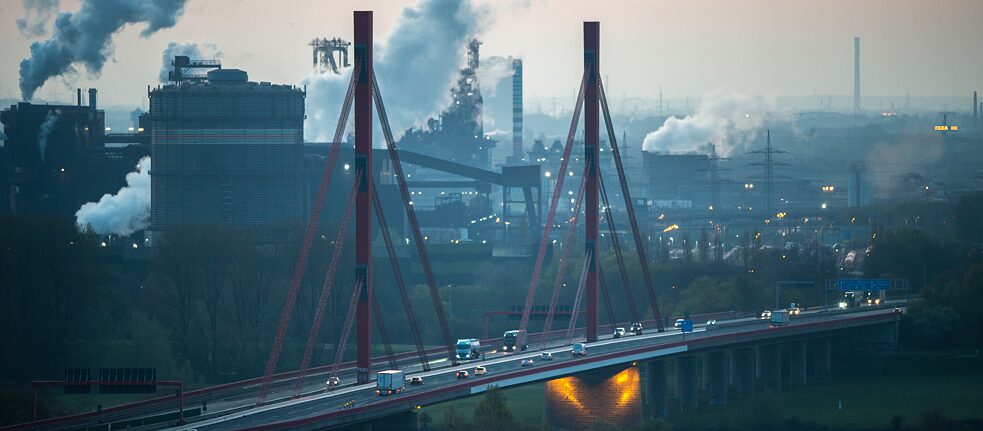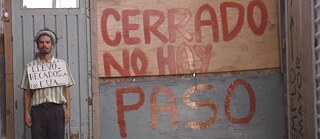Building Sustainably Carbon Europe

Europe is built on steel. Although there were understandable reasons for this historically, it is becoming a problem today, as construction projects in European countries depend on carbon-intensive building materials. In his book “Building Carbon Europe”, the author Dennis Pohl explores how steel evolved to become a key building material, why flexible prefabricated buildings have not become the norm – and how innovative architecture could transform the construction industry.
Mr Pohl, you write that many of our problems in the energy sector today are rooted in decisions taken a long time ago by the European Union (EU), and in some cases even in decisions taken by its predecessor institutions, such as the European Coal and Steel Community (ECSC). What is the basis for these claims?
In the 1960s, the ECSC viewed architecture as a means of meeting the high demand for workers’ housing. At the same time, large coal mines and steel producers provided funding for architectural programmes that supported house building. Steel in particular was the building material of the hour – for several reasons: energy was no finite quantity at the time, and coal mining meant that resources appeared to be no problem. And the use of steel in construction was welcomed because it allowed the high level of steel production seen during the Second World War to be seamlessly adapted to peaceful purposes. The ECSC also styled itself as a European peace project.
Who was the initiator of this strategy?
Conferences were organized by the European Commission, with architects, engineers, steel producers and other stakeholders across Europe being invited to come and discuss the role that architecture could play in steel production. Renowned architects drew up visions that were then realized – in the form of housing estates for workers, for example. They served as a test bed for all kinds of applications for steel. The goal was to make coal and steel production so controllable that no member state of the then ECSC would be capable of accumulating such a huge weapons monopoly as Germany managed to do in the Third Reich. This applied to both Germany and Italy, the two leading steel producers. At the same time, steel production was standardized so that steel could be traded and used in buildings throughout Europe. Some of the standards defined at that time remain in place to this day.
 The predominance of fossil energy: the steelworks dominates the city – in this case the Thyssen-Krupp plant in Duisburg.
| Photo (detail): © picture alliance/Jochen Tack
You call these ideas innovative despite their high energy consumption. Why?
The predominance of fossil energy: the steelworks dominates the city – in this case the Thyssen-Krupp plant in Duisburg.
| Photo (detail): © picture alliance/Jochen Tack
You call these ideas innovative despite their high energy consumption. Why?
Because they demonstrated that Europe could make it possible to construct flexible industrial buildings. This can still be seen in the flats that were designed in 1976 for the ECSC test project by the architect Jochen Brandi in Berlin. Walls could be moved so that residents could adapt the rooms to their individual circumstances and needs. That was extremely innovative. 3,000 architects applied to enter the competition. However, this method of construction is precisely what then led to “Carbon Europe”.
Why were these ideas not taken any further?
The oil crisis halted this development. Steel production became so expensive that any approaches conceived of at the time petered out. And yet many universities had begun exploring these prefabricated buildings. The idea was to make steel just as efficient and cheap in the construction sector as it was in the automotive industry. Unfortunately, the oil crisis and its consequences caused this approach to building to disappear from architecture. If it had become the norm, it is possible that today’s construction sector would have been much more capable of adapting to societal and political changes.
Emissions in the construction sector account for 40 percent of overall emissions.
These days we do not build flexibly, but still very energy-intensively.
The loss of this innovative building technique is one of the disadvantages of this strategy. What is more disastrous however is that it has led to Europe’s dependence on fossil fuels, which persists to this day and will long continue to pose a problem for future generations. It is important to understand that emissions in the construction sector account for 40 percent of overall emissions – it takes unbelievable amounts of energy to manufacture cement and steel.
What would be the alternative?
The energy transition is happening, but more or less only in one sector: we are now seeing electric cars, bicycles and new mobility concepts all over the place. We urgently need a similar turnaround in the construction industry, however – moving us away from steel and materials that generate high carbon emissions. We must transition away from the Europe built by the ECSC and build a different Europe. We must decarbonize Europe. This is not only a question of technological solutions or of how many heat pumps we can install, nor is it only about reducing our dependencies. It also requires an aesthetic mindset: architecture has huge potential to help us progress on our path towards more independence and a new construction sector.
 Europe is battling with the consequences of decisions taken in the past: coal and iron were once considered infinite, and today we are dependent on carbon-intensive building materials.
| Photo (detail): © picture alliance/dpa/Jonas Güttler
Why is this not being done more? After all, it would be a great opportunity for architects to build a reputation for themselves in an area of key societal importance.
Europe is battling with the consequences of decisions taken in the past: coal and iron were once considered infinite, and today we are dependent on carbon-intensive building materials.
| Photo (detail): © picture alliance/dpa/Jonas Güttler
Why is this not being done more? After all, it would be a great opportunity for architects to build a reputation for themselves in an area of key societal importance.
The EU’s New European Bauhaus project is trying to do exactly that and involves lots of outstanding projects that are all about creativity, sustainability and the future – and about the human component. Houses are being designed that are not only energy-efficient but also facilitate social interaction, such as Gleis 21 in Vienna. Or the bus stop in Tallinn, Estonia that was built on a zero-waste basis. Or the knitting project in Spain used to provide streets with shade. However, the committed individuals who are involved in such projects repeatedly find themselves encountering enormous obstacles – everything from bureaucracy and the lack of innovative architectural firms to the fact that universities show no interest in this. As architects, we must think a lot more about what would affect future generations and what rights they have.
At the “Power” exhibition supported by the Goethe-Institut in Brussels, you will be meeting the artist Armin Linke for a “Power Talk”. How are the two of you connected?
Armin Linke and I have already worked together. We visited European decision-making centres – such as the Emergency Response Coordination Centre, where for example the outbreak of the coronavirus pandemic was registered at a very early stage. It’s impressive: you have this huge control centre where humanitarian and ecological crises are mapped in real time, so to speak. We are both very interested in EU institutions – his photographs document things like energy flows and how they are controlled. Archive images from my research have also been included in the “Power” exhibition, giving rise to a comprehensive and associative overall picture. There are many overlaps between research and art in this respect.
“Power” Exhibition
The “Power” exhibition that is taking place in CIVA Brussels from 13 October 2023 to 25 February 2024 connects questions of energy and politics. It challenges visitors to consider how contemporary infrastructure relates to everyday life across intersecting areas such as political institutions, citizen participation, geopolitics, the energy transition and climate justice. Besides the exhibition, the Goethe-Institut is also supporting the accompanying programme and “POWER Talks” series of events.


